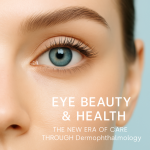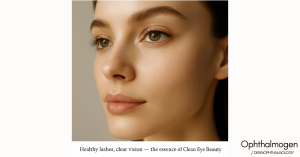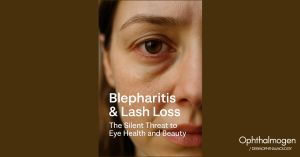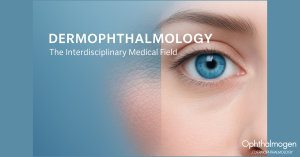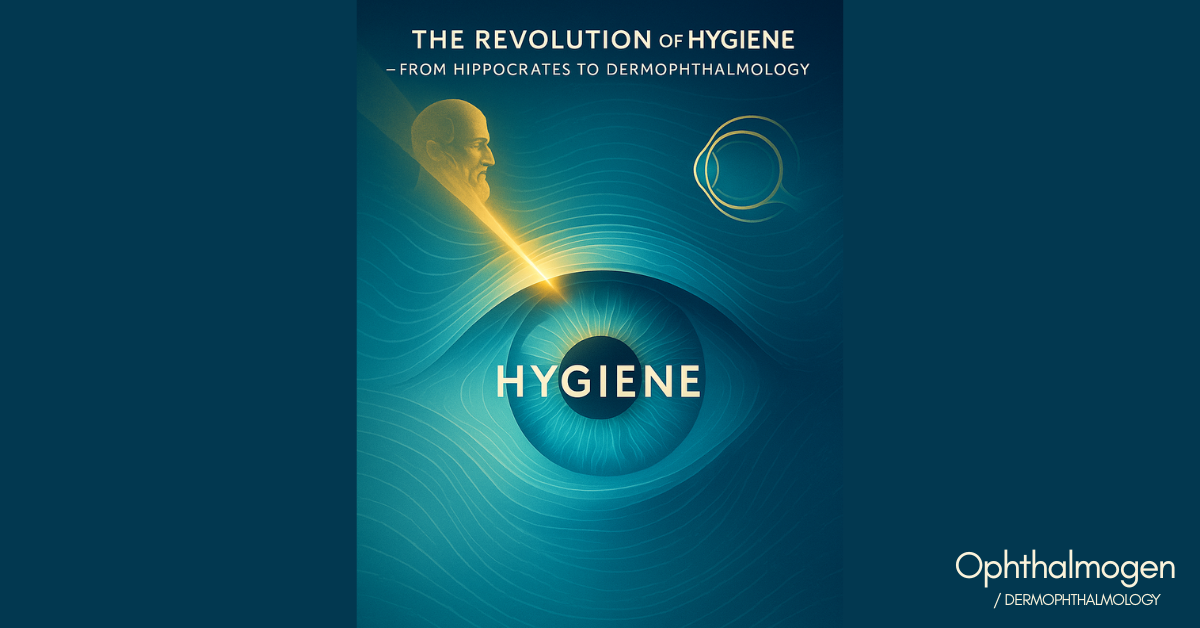
Introduction – A New Era of Prevention
The history of Medicine is the history of Hygiene. From the Asclepia of Ancient Greece to modern hospitals, cleanliness has always been the first step in healing.
Today, the greatest epidemic is not infection — it is neglect.
Not of the hands, but of the eyes.
Dermophthalmology, the new scientific discipline that unites Dermatology and Ophthalmology, brings to light a forgotten truth: eyelid hygiene is the basis of clear vision, prevention and the beauty of the gaze.
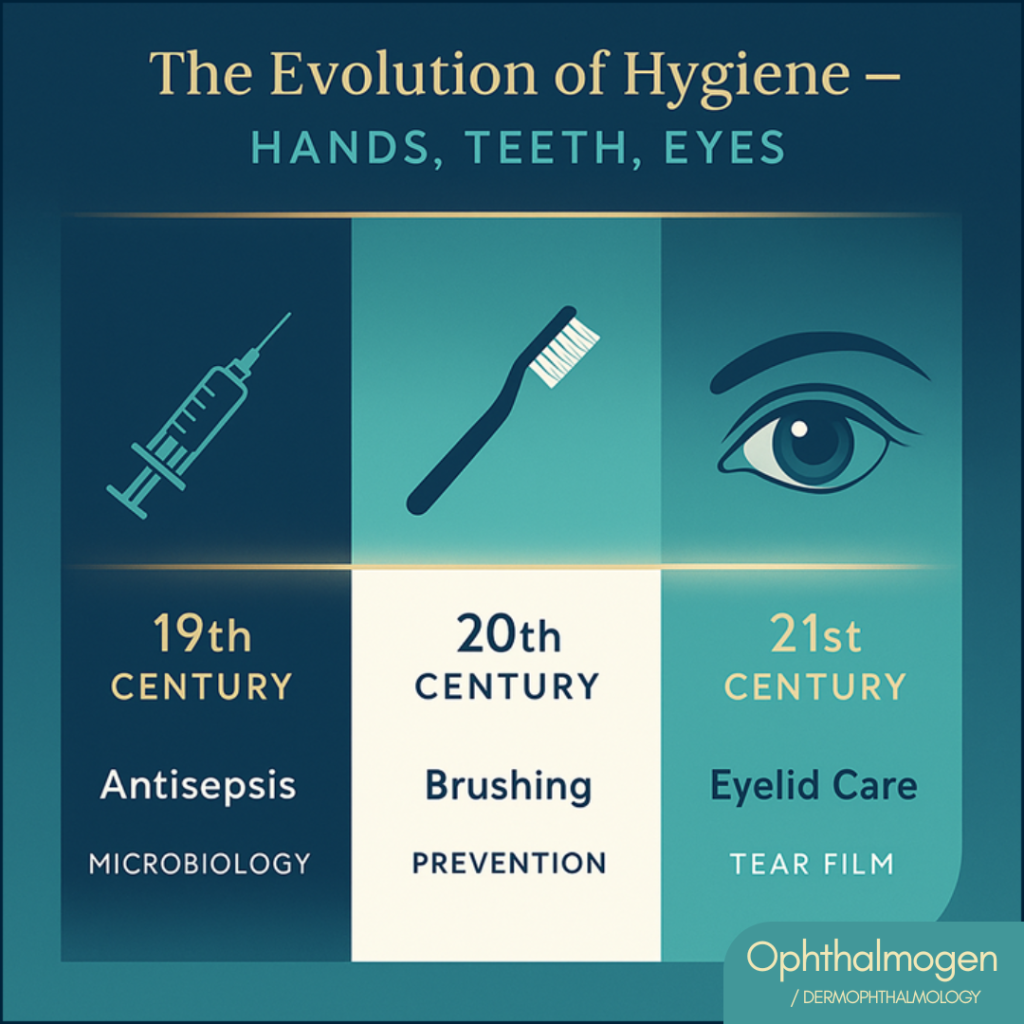
From Hands to Teeth — and Now, to Eyes
In the 19th century, Microbiology changed Medicine.Pasteur and Semmelweis proved that cleanliness saves lives —sterilization became the foundation of hospitals.
In the 20th century, Dentistry did the same:daily brushing and prevention reduced disease and extended the lifespan of teeth.
In the 21st century, Dermophthalmology continues that legacy —this time, for the eyes. Just as teeth need cleaning to stay healthy,the eyelids must be cleansed, hydrated, and decongestedto protect the physiology of vision.
Why Eyelid Hygiene Matters
The eyelid is the most underestimated organ of vision.Within it lie the Meibomian glands, which secrete the lipids of the tear film —a microscopic “lubrication system” that maintains clarity and optical stability.
When these glands become blocked by sebum, makeup, bacteria, or parasites such as Demodex folliculorum,the tear film destabilizes, the eye dehydrates, and vision flickers.
Kooetal., JOphthalmolRes, 2020:91% of patients with recurrent chalazia tested positive for Demodex DNA.
Dry eyes, blepharitis, and chalazion are not minor annoyances; they are signs of chronic inflammation and lack of prevention—just as tooth decay used to be a sign of dental neglect.

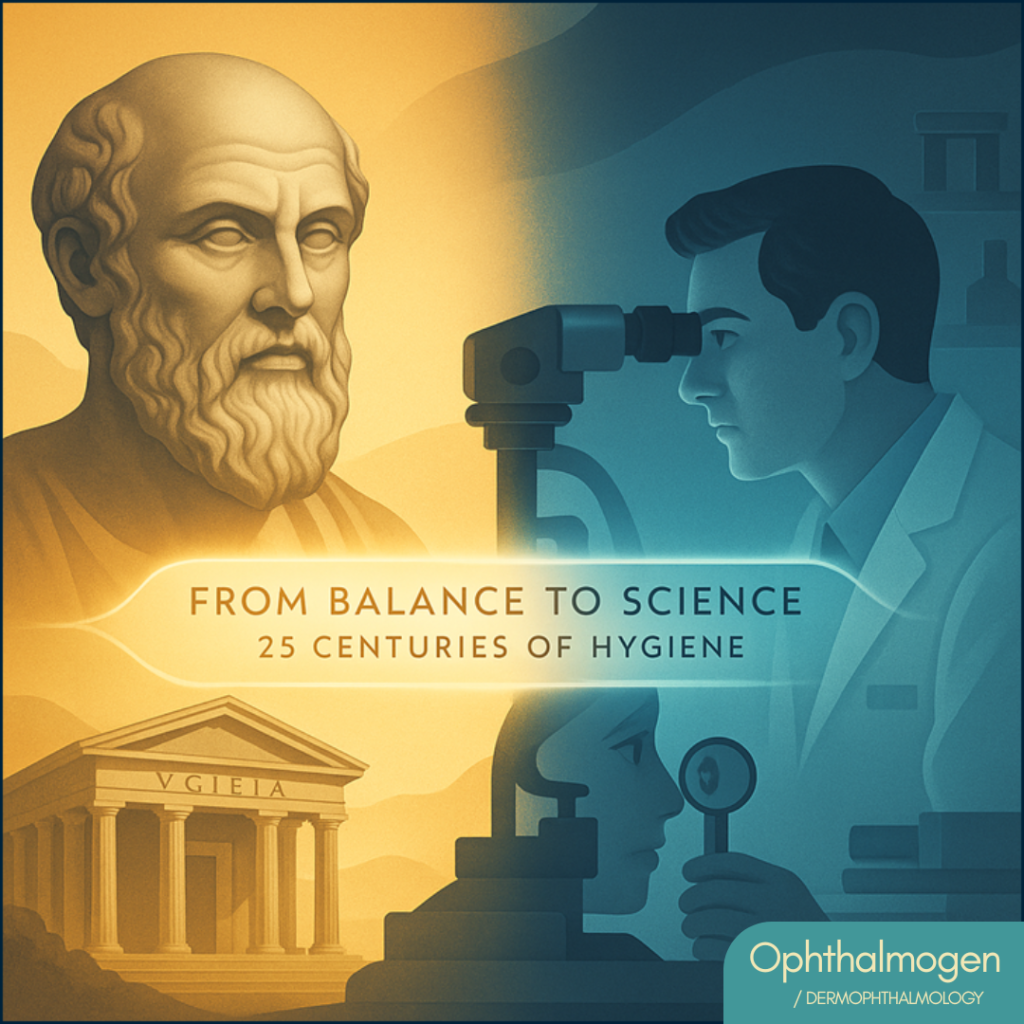
From History to Modern Science
Hippocrates taught that health is balance among the elements of nature.His daughter, Hygieia, personified cleanliness and prevention —purity was a sacred act, a symbol of respect for the body, the spirit, and the light.
Twenty-five centuries later, the World Health Organization (WHO) reaffirmed the same truth:
“Health is not merely the absence of disease,but a state of complete physical, mental, and social well-being.”
This is not coincidence.It is the continuation of the same Greek spirit that founded the essence of medicine.
From Philosophy to Global Practice
Founded in 1948, the WHO placed prevention at the heart of global health.Through its initiatives, it:
- established vaccination programs,
- enforced disinfection and sterilization standards,
- promoted hygiene education in schools,
- and reduced global epidemics through clean water and sanitation.
Preventive medicine became civilization.
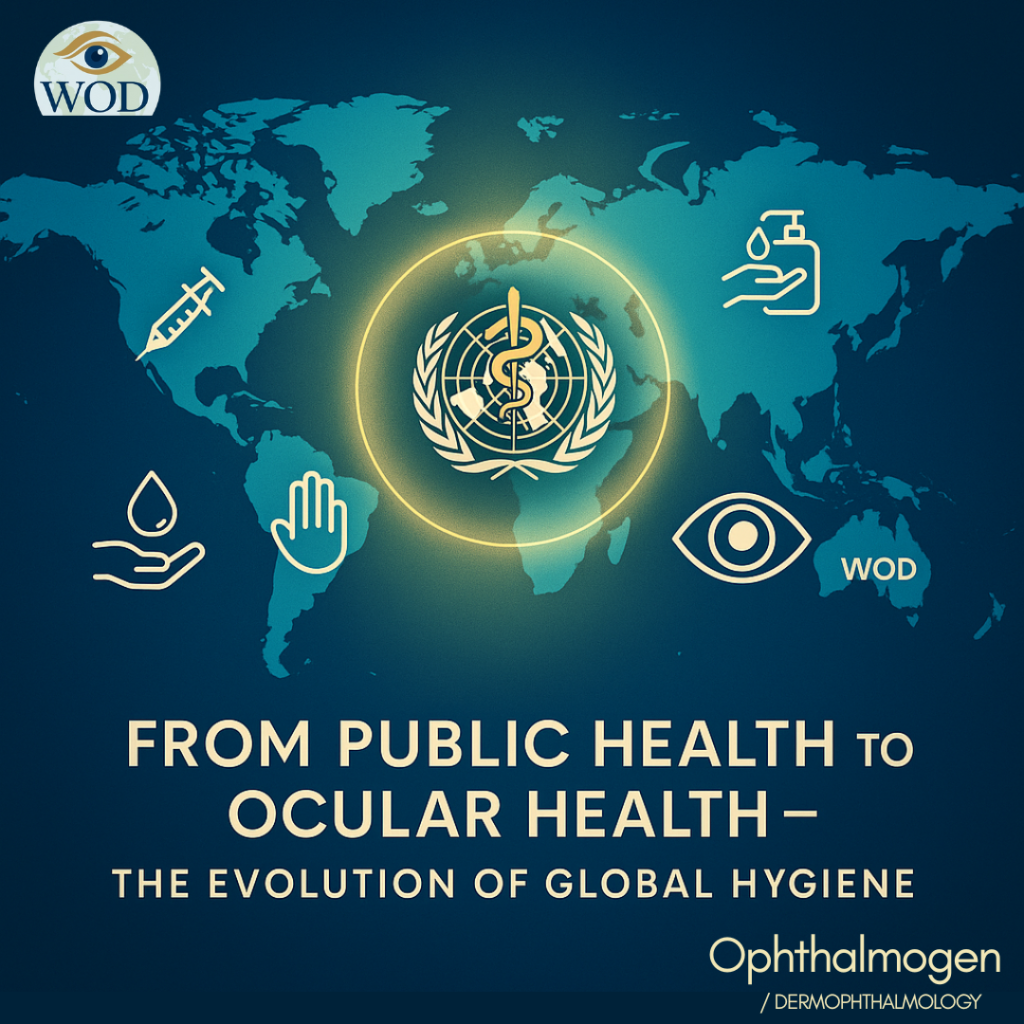
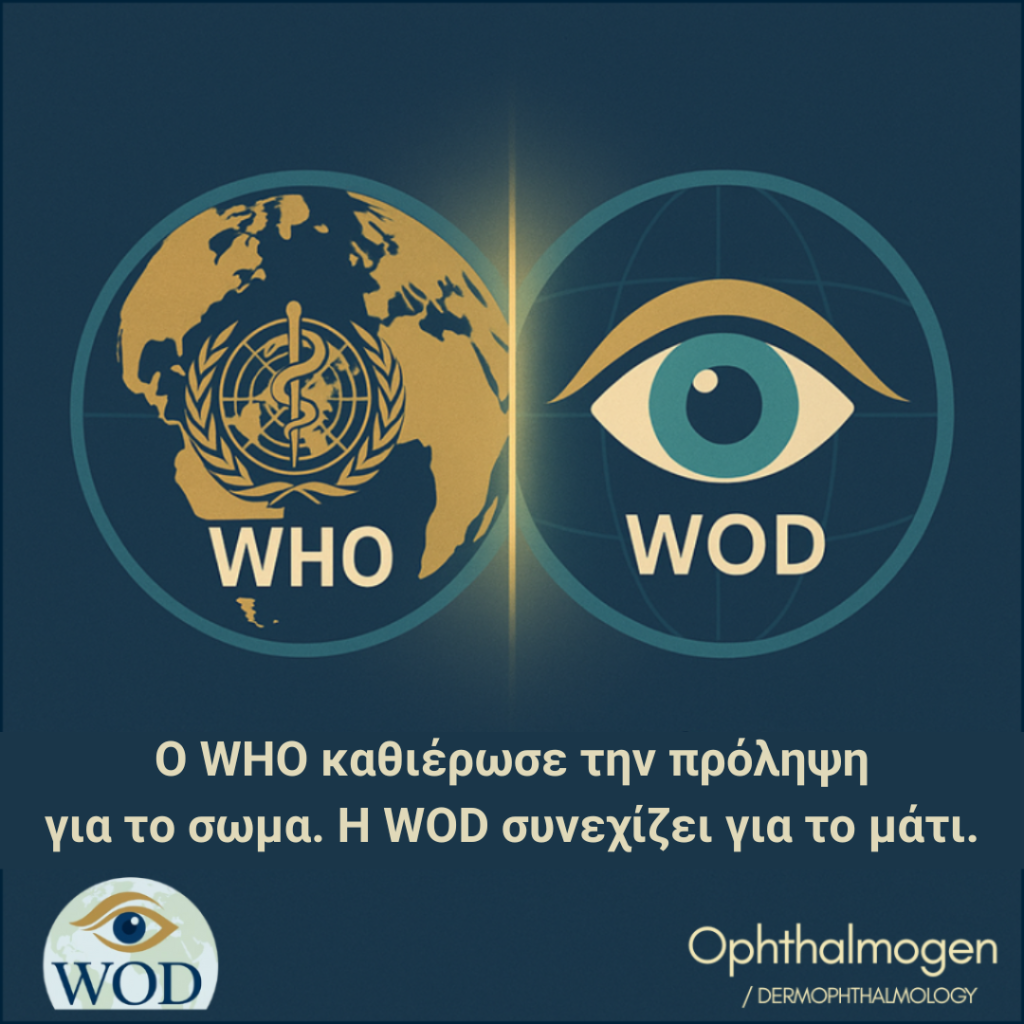
Continuing the Work – The WOD
Just as WHO established prevention for the body, WOD – World Organization of Dermophthalmology brings prevention to the level of vision and beauty.
The WOD unites ophthalmologists and dermatologists,advancing eyelid hygiene as a daily act of ocular health and aesthetic wellness.
The WHO taught the world to wash its hands.
The WOD teaches the world to cleanse its eyelids/eyelashes.
Both serve the same Hippocratic truth:
Purity is healing; light is prevention.
The Scientific Dimension – From Prevention to Optimization
Proper eyelid hygiene enhances the outcome of every medical and surgical procedure.Before cataract, LASIK, intraocular lens, or blepharoplasty surgeries,conditions like blepharitis or dry eye can alter measurements by 0.25–0.5 D,affecting postoperative visual quality.
Moreover, patients with pre-existing inflammation or tear film instabilityoften experience watering, foreign-body sensation, or irritation thatintensifies after surgery, since the ocular surface is already compromised.
Preoperative and postoperative care with Ophthalmogen Gel, Spray and EYE10 restores film stability, improves refractive accuracy, and enhances microcirculation and neurohematological balance of the eyelids and ocular surface.
Eye hygiene does not limit ophthalmology —it expands it, integrating prevention, therapy, and aesthetics.
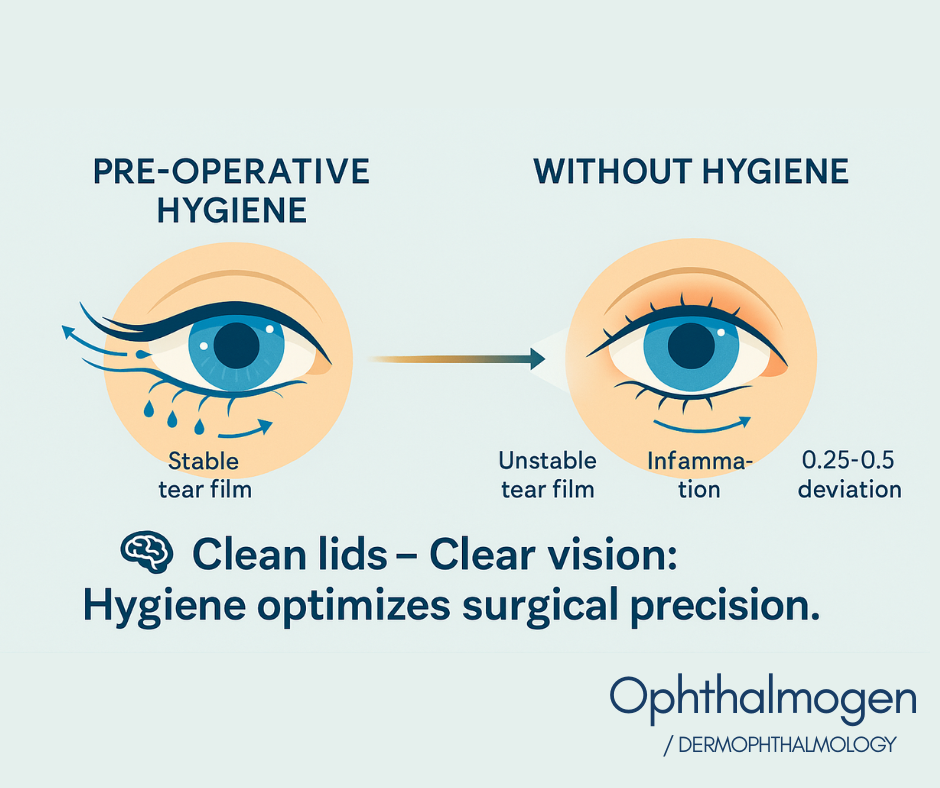
Eyelid Hygiene as a Daily Medical Practice
Cleansing the eyelids and lashes is not a cosmetic act —it is a medical routine of prevention and optimization.
Clean lids mean:
- a stable tear film
- steady focus
- reduced fatigue
- improved postoperative vision
Daily hygiene improves measurement stability and visual quality —it is the new standard of ocular health.
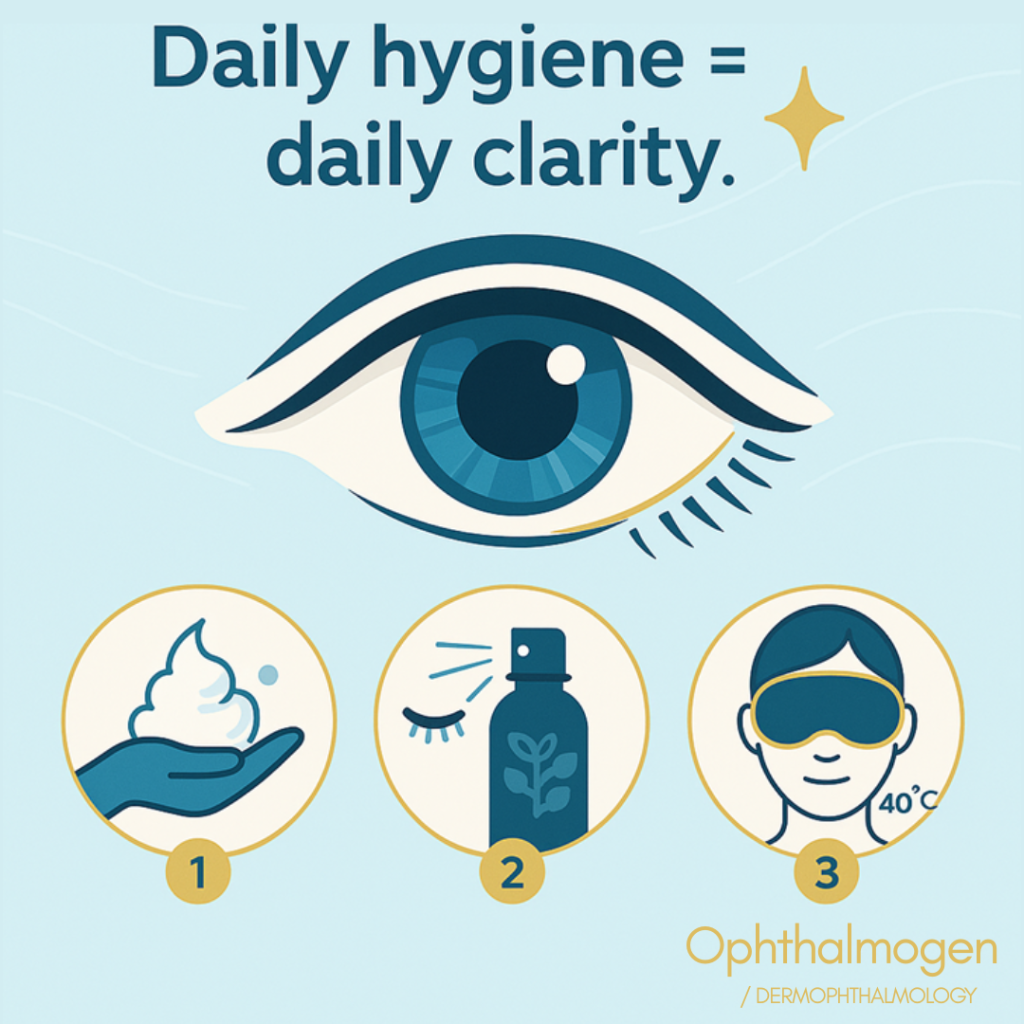
Ophthalmogen – The Daily Revolution
The Ophthalmogen range translates the philosophy of Dermophthalmology into daily practice:
- OphthalmogenGel → cleansing, Demodex removal, and sebum regulation
- Ophthalmogen Spray → microbiome rebalancing and ocular surface refresh
- OphthalmogenEYE10 Masks → 40°C self-heating relief and glandC decongestion
Daily use is not a luxury —it is the “toothbrushing” of the eyes,the natural evolution of oral and skin hygiene.
Article Significance
This article unites three scientific dimensions:
- Reframes the meaning of hygiene in modern medicine.
- Recognizes Dermophthalmology as a continuation of Hippocratic and WHO principles.
- Establishes Ophthalmogen as the global reference for daily prevention.
- Restores Greece to its rightful place as the birthplace of medical philosophy and purity.
Purity is not a trend.
It is science, civilization, and reverence for life.
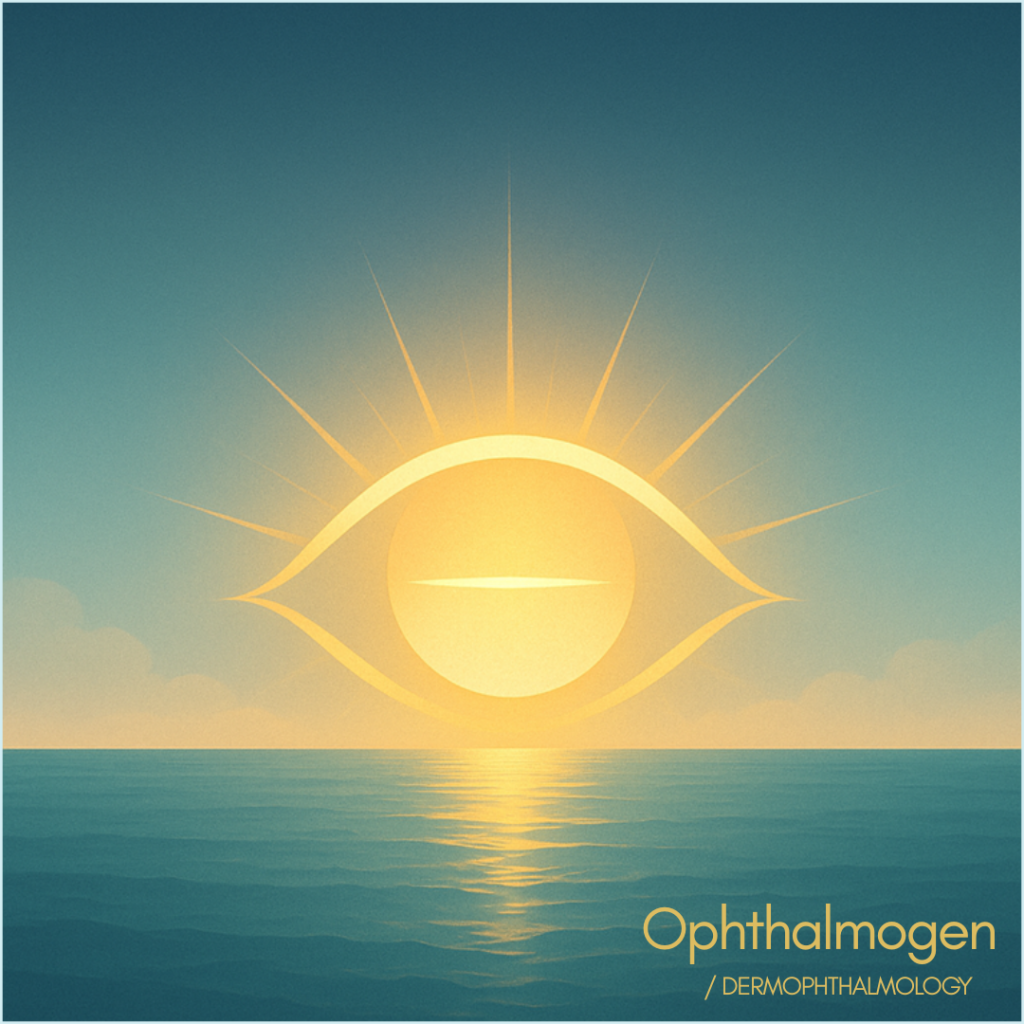
References
- Koo et al., J Ophthalmol Res, 2020
- Craig JP et al., Ophthalmic PhysiolOpt, 2021
- Millar TJ et al., Prog Retin Eye Res, 2023
- Papadopoulos A et al., Hellenic Ophthalmic Rev, 2024
- WHO Archives, Global Health and Hygiene Initiatives, 1948–2020
Conclusion
Hygiene is the first form of medicine.Dermophthalmology continues this timeless tradition,bringing eye care back to where it began —to the land of Hippocrates.
From Hygieia to Ophthalmogen,purity returns to light.
Discover the full Ophthalmogen range at www.ophthalmogen.com and Dermophthalmology at www.Dermophthalmology.com
Give your eyes the care and beauty they deserve.


